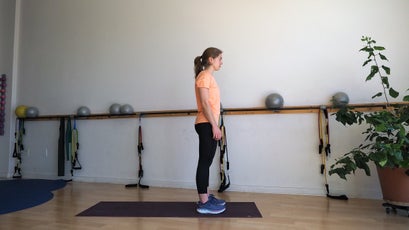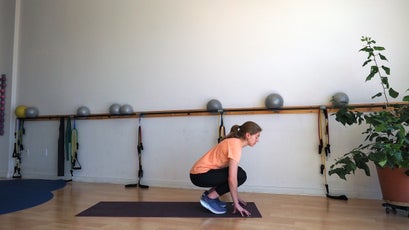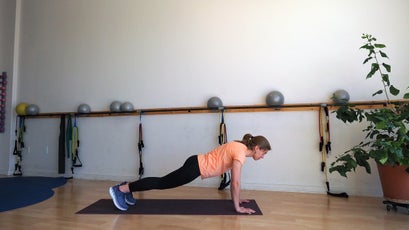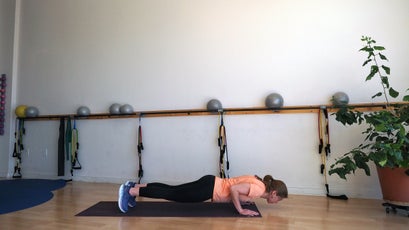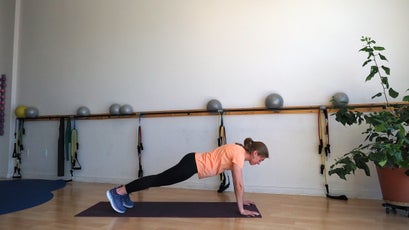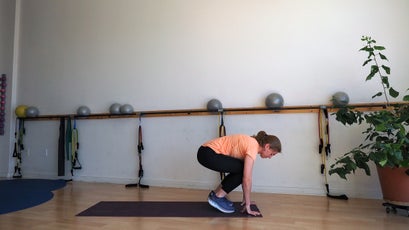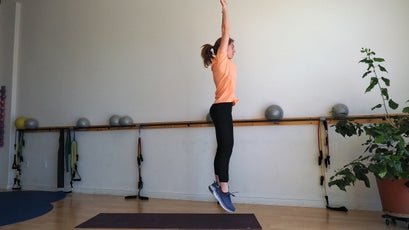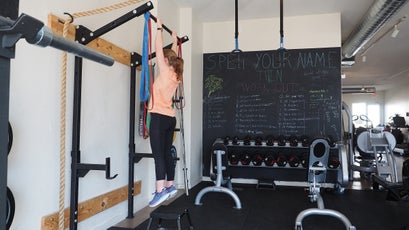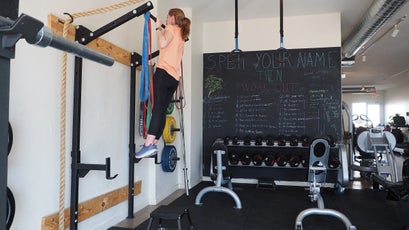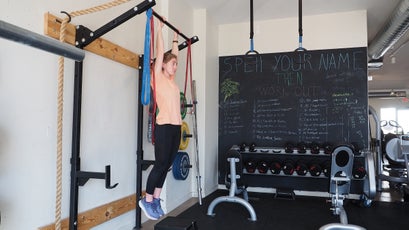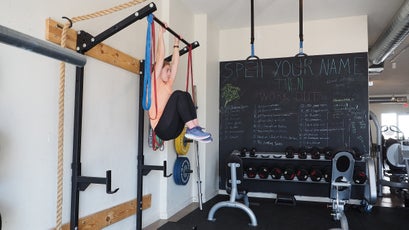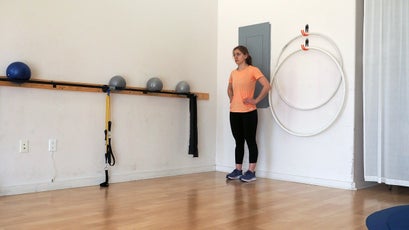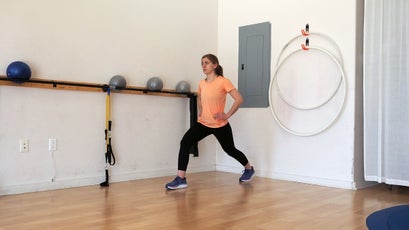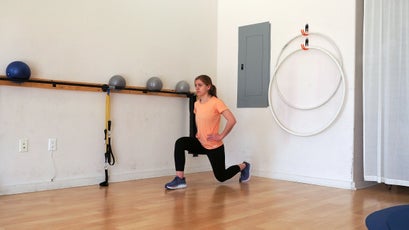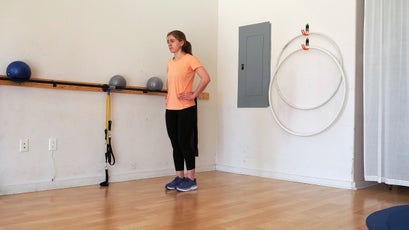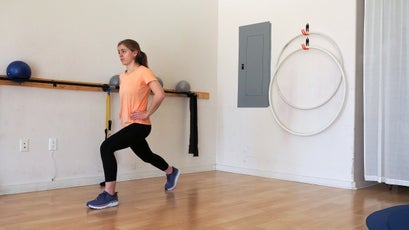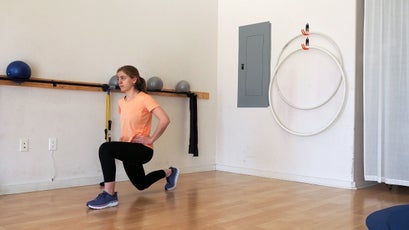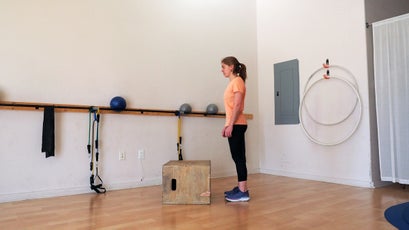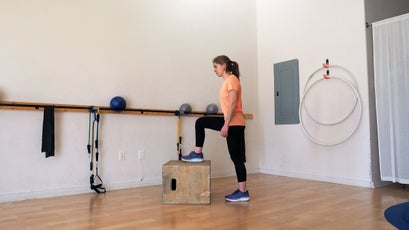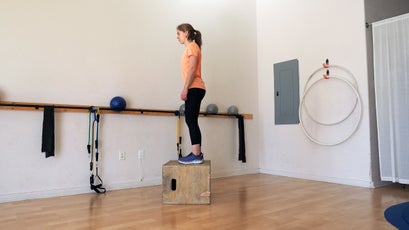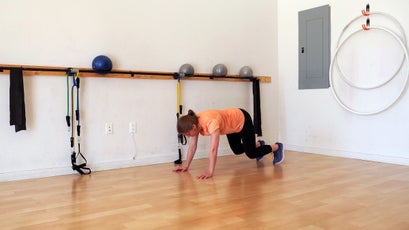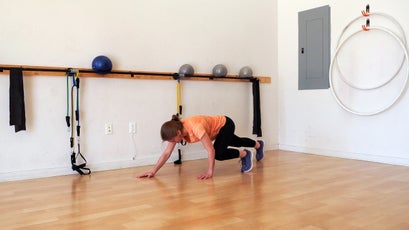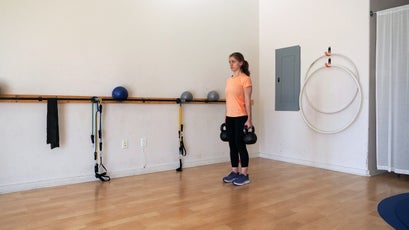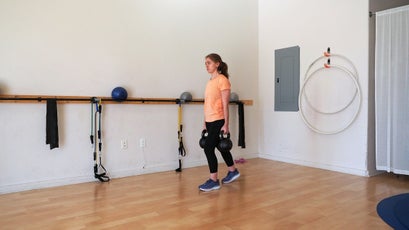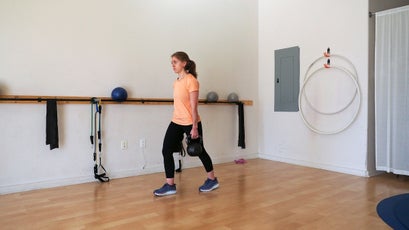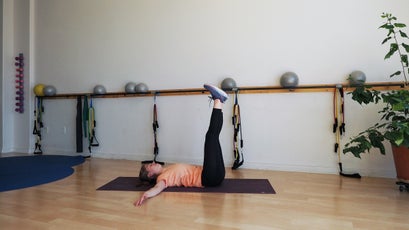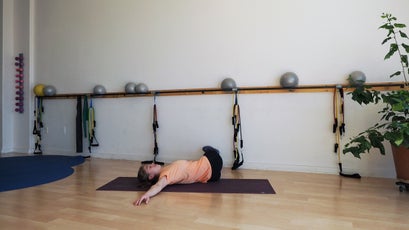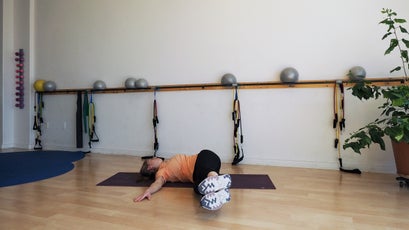Obstacle-course races demand an array of skills: raw strength and power, muscular and cardiovascular endurance, speed╠řand agility. As it happens, these are also the key components for most outdoor sports. Both OCR and mountain adventures involve╠řnatural human movementsÔÇörunning, climbing, crawling, swimming, jumpingÔÇöwhich means you need functional strength, mobility, and a solid core.
ÔÇťOCR requires you to be well-rounded,ÔÇŁ says Robert Killian, a former Green Beret who averages 25 races a year and won the Spartan Race World Championships in 2015. ÔÇťYou donÔÇÖt need to be the best at any one component, but you need to be good at everything.ÔÇŁ
Killian also coaches OCR╠řathletes on the side. Below, he shares a strength workout to build functional, holistic fitness, whether youÔÇÖre training for an OCR╠řyourself or just looking to boost your training. Most of these are minimalist, bodyweight exercises, and you need very little equipment. ÔÇťThatÔÇÖs what I like about functional fitness,ÔÇŁ says Killian.╠řÔÇťYou can do it anywhere.ÔÇŁ
Tools YouÔÇÖll Need
- Pull-up bar
- Box or bench
- Dumbbells or kettlebells
- Weighted vest (optional)
- Sandbag (optional)
The Moves
First do a warm-up: jog╠řfor ten to fifteen minutes, followed by five to ten pull-ups╠ř(you can modify these╠řif straight pull-ups are too hard), 30 burpees at a moderate pace, and some dynamic stretching. Then complete the workout below as a circuit. Start with the first exercise╠řand move through each in order, without resting in between. Do two to four rounds of the circuit, with three to five minutes of rest between each round.
Start with bodyweight only, and focus on form over volume. Once you can complete all reps of a given exercise easily, in control, and with perfect form, add weight to increase the challenge. ÔÇťYou donÔÇÖt have to use heavy weights,ÔÇŁ Killian says. ÔÇťYouÔÇÖre not trying to build massive muscles.ÔÇŁ He suggests a balance between medium weight and higher reps. If your goal is 12 reps, you should be able to complete 15 before maxing out or losing form. Systematically increase the load as your body adapts.
Burpees
What they do: Work╠řyour legs, core, upper back, arms, chest, and even cardio strengthÔÇöif you do them fast enough.
How to do them:
- Start in an athletic stance, with your feet hip-width apart and your knees slightly bent.
- Crouch and place your hands on the ground, shoulder-width apart.
- Hop your feet directly behind you to straighten your legs, and enter a high-plank position, with your feet together or no more than 12 inches apart.
- Complete a strict push-upÔÇöbend your elbows to lower your chest to slightly below the level of your bent elbows, and push back up to the high-plank position. Keep your back flat and your hips level throughout the movement.
- Jump your feet forward,╠řto just behind your hands, to return to the crouching position.
- Reach your arms overhead, then jump vertically as high as you can.
- Land with soft knees (this marks one repetition), and immediately crouch again to repeat the process.
Complete the exercise in one fluid motion, with no pause between stages or reps, but pay attention to form, and donÔÇÖt get sloppy as you start to feel fatigue.
Reps: 10 to 15
Pull-Ups
What they╠řdo: Primarily strengthen╠řthe lats, as well as the biceps, upper back, shoulders, forearms, and core.
How to do them:
- Grip a pull-up bar with your palms facing away from your body and your hands shoulder-width apart or slightly wider. Hang with straight arms, and squeeze your shoulder blades together to engage your shoulders and protect the joints.
- Pull up until your chin is above the bar.
- Slowly lower yourself until your arms are straight again, marking one repetition. Move slowly and in control. Your╠řlower body should remain still throughout the movement (no swinging your legs for momentum).
If full pull-ups are too challenging, do them with assistance: a resistance band╠řto the pull-up bar, place a knee in the bottom loop to take some load off your arms, and perform the exercise as just described. Increase the difficulty by wearing a weighted╠řvest or a backpack full of rocks╠řor hang weights from a climbing harness.
Reps: 8 to 12
Hanging Knee Raises or Straight-Leg Raises
What they do: Primarily strengthen╠řthe abs, as well as the obliques, hip flexors and adductors, and forearms (grip strength).
How to do them:
- Just like youÔÇÖre doing pull-ups, grip the bar with your palms facing away from your body and your hands shoulder-width apart. Hang with straight arms, and engage your shoulders to protect the joints.
- Lift and tuck your knees all the way into your chest for the easier version of this exercise. If you want more of a challenge, keep your legs straight and your feet together, then lift your feet all the way to the bar.
- Slowly reverse the movement back to the starting position for one repetition.
Move slowly and in control. Swinging and using momentum are╠řpoor form. If you do begin to swing, hang still for a moment or use a foot against the floor or wall to steady yourself before continuing. Increase╠řthe difficulty by wearing heavy boots or ankle weights.
Reps: 8 to 12
Walking Lunges
What they do: Primarily strengthen╠řthe glutes, quads, and adductor magnus (inner thigh) muscles, while also working the hamstrings, calves, hip stabilizers, and core, and training balance.
How to do them:
- Stand tall with your feet hip-width apart and your toes pointed forward.
- Take a big step forward (between two to three feet in distance, depending on your height), landing first with the heel and then the forefoot to soften the impact (but always keep the front heel down).
- In one smooth, continuous motion, sink your hips to lower into the lunge until your front thigh is parallel to the floor. (Be mindful that your front knee does not dive inward╠řor go beyond your toes.)╠řPause for a second.
- Engage both legs to stand, and bring the rear leg forward to meet the other. This marks one repetition for the leg that stepped first.
- Step forward again with the previously trailing leg so youÔÇÖre alternating legs each step.
Hold your chest high, and keep your pelvis neutral╠řand your torso straight and upright throughout the movement. Make it harder by holding dumbbells or wearing a weighted vest.
Reps: 8 to 12 (each leg)
Forearm Plank
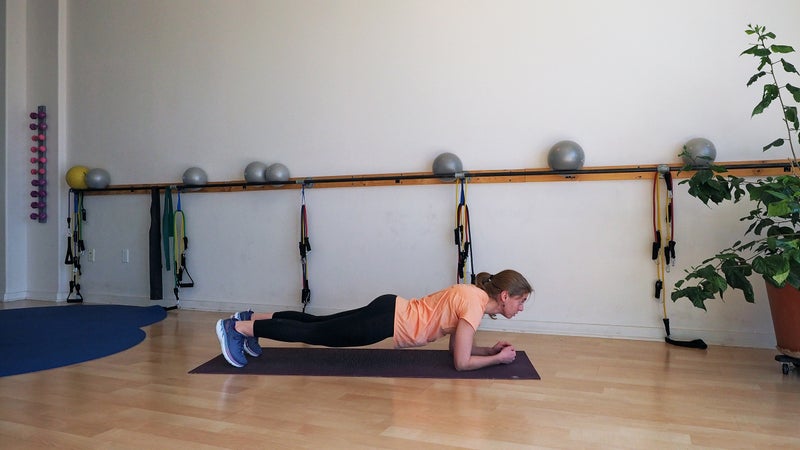
What it does: Builds strength and stability in the core muscles (including the back) through an isometric hold.
How to do it:
- Kneel and place your forearms on the ground shoulder-width apart, with your elbows below your shoulders and your hands close together╠řbut not touching.
- Extend both legs directly behind you, with your feet together and your toes tucked under, so that your body forms a straight line from your heels to your head. Hold╠řfor one to two minutes╠řor until you canÔÇÖt maintain good form.
Keep your back flat (no sagging, arching, or tilting the hips) and your head up so your neck is in-line with your spine. Make it harder by wearing a weighted vest, or have a friend carefully place plate weights on your back.
Reps: Hold up to two minutes╠řor until loss of form
Box Step-Ups
What they do: Strengthen╠řthe quads, glutes, hamstrings, and calves.
How to do them:╠ř
- Stand in front of a sturdy box or bench (midshin to knee height).
- Step onto the box with one foot, making sure your entire foot is on the box and not just the forefoot.
- Engage the quad, and press through the heel of your upper leg (this one should do all of the work) to stand, and bring your lower leg up onto the box.
- Step back down for one repetition. Repeat, this time stepping up with the opposite leg. Alternate legs each rep.
Keep your torso upright, your core engaged, and your hips and shoulders level throughout the movement. Watch out for wobbly knees, as this pattern is associated with knee pain. If your knees collapse inward as you step, add side steps and backward skates to your workout routine to improve your knee stability and control. Hold dumbbells or wear a weighted vest to progress the exercise.
Reps: 10 to 15 (each leg)
Bear Crawl
What it does: Strengthens the core, shoulders, arms, and glutes, and also trains stability.
How to do it:
- Start in a tabletop position, with your hands below your shoulders, your knees below your hips, and your back flat.
- Engage your core, and lift your knees off the floor by a couple of inches to come up onto your toes.
- Hold this raised position, and crawl forward by moving the opposite hand and foot at the same time. Move slowly and in control, without tilting your hips or rounding your back. Try to touch your front knee to your rear elbow, or get as close as possible while maintaining good form.
Increase the difficulty by wearing a weighted vest or holding dumbbells in your hands (lift them completely off the ground to move themÔÇöno sliding).
Reps: Crawl for 50 feet. Alternate moving in a forward or backward direction each set.
FarmerÔÇÖs Walk or Sandbag Carry
What it does: Strengthens the back, shoulders, core, and grip, and trains core stability.
How to do it:
- Pick up a pair of dumbbells or kettlebells, and hold the weights with straight arms at your sides. Or╠řuse both hands to hoist a sandbag up onto your shoulder (lift with your legs, not your back).
- Stand tall, with your core engaged, your chest lifted, and your back straight. Look forward. Keep your hips and shoulders level.
- Walk forward by taking small steps, slowly and in control.
Reps: Walk for 30 seconds or 50 to 150 feet. Use a treadmill if you have limited space.
Hanging or Lying Windshield Wipers
What they do: Strengthen╠řthe core, particularly the obliques and rotational control, and also target╠řthe hip flexors and grip strength (in the hanging version).
How to do them:
- Grip a pull-up bar with your palms facing away from your body and your hands shoulder-width apart. Hang with straight arms, and engage your shoulders.
- Keep your legs straight and your feet together, then lift your feet all the way to the bar, just as you would for hanging straight-leg raises.
- Slowly lower your legs to one side until they are parallel to the ground, then reverse the movement back to center. Then lower to the other side and bring them back to center again. Continue pivoting your legs from side to side.╠ř
If the hanging version is too hard, try it lying on the ground.╠ř
- Lie flat on your back, with your arms out to either side and your palms down for support.
- Raise your legs straight up so that theyÔÇÖre perpendicular to the ground, with your feet together and your toes pointed upward.
- Slowly rotate your hips to lower your legs to one side until your feet almost touch the floor, then reverse the movement back to center.
- Repeat on the other side, and continue pivoting your legs from side to side.
Move slowly and in control, with your feet together. Keep your legs as straight as possible (you might need to bend your knees slightly if you have tight hamstrings). When you can do ten╠řreps to each side with good form, make it harder by wearing heavy boots or ankle weights.
Reps: 8 to 12 (each side)



